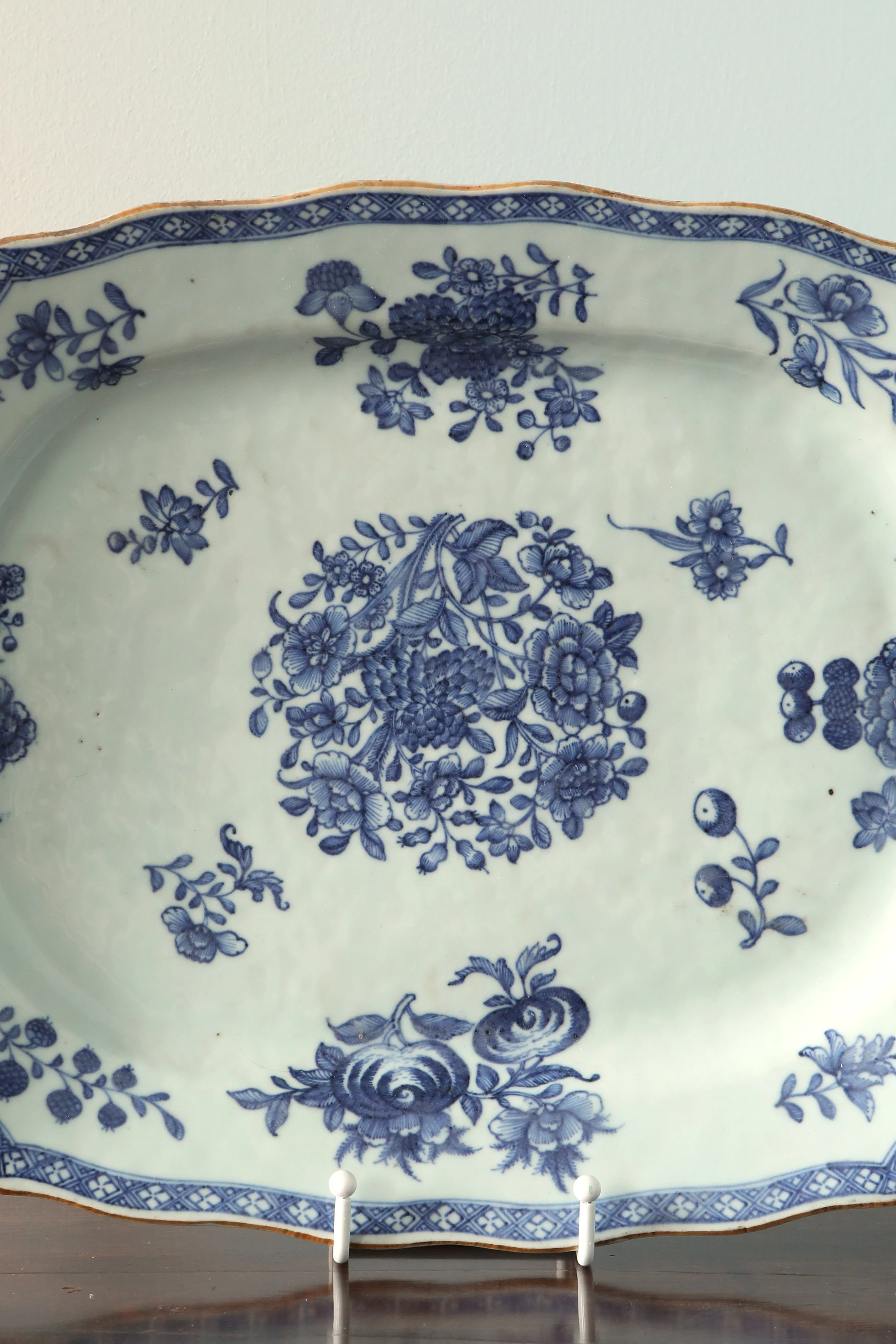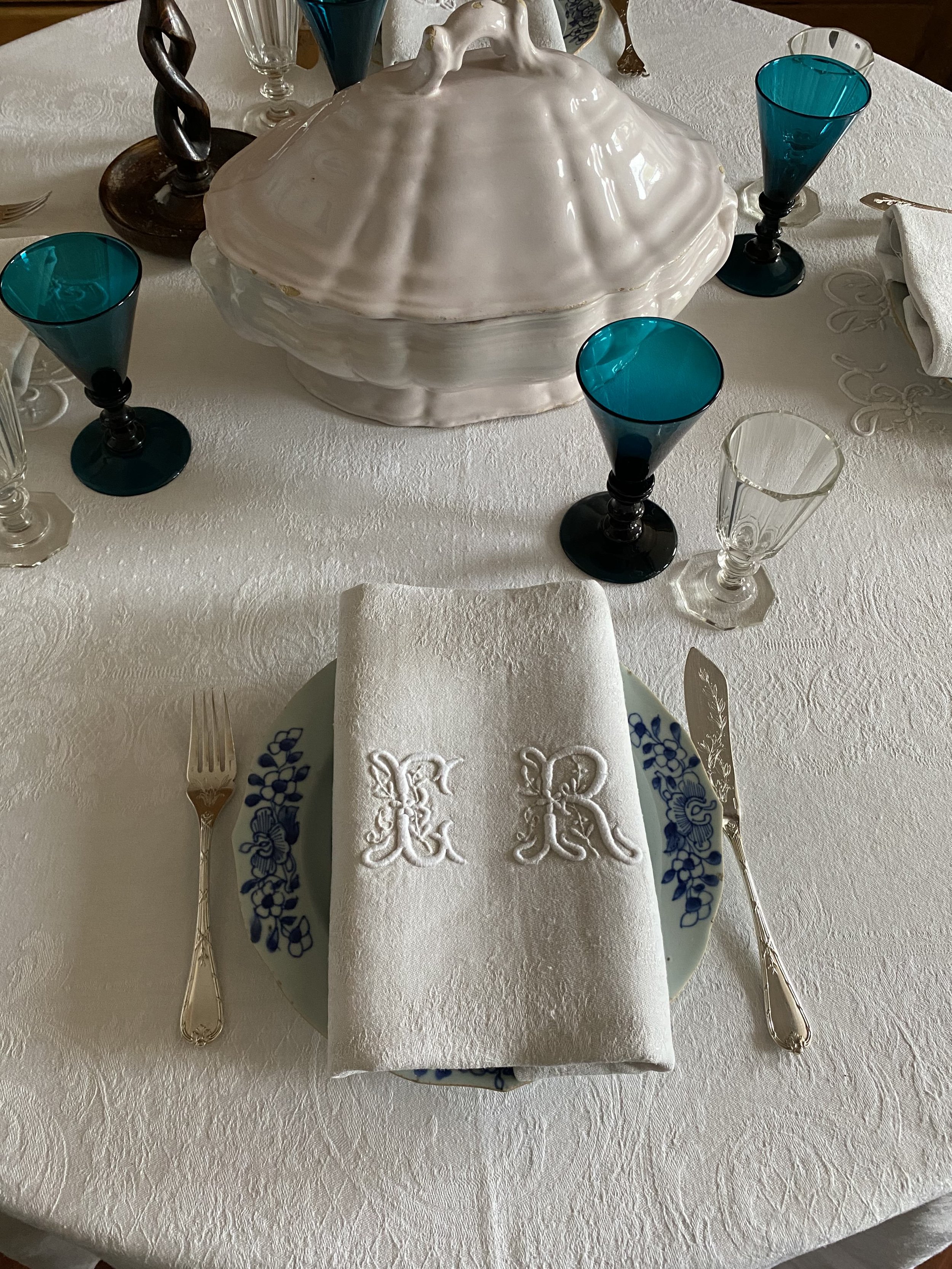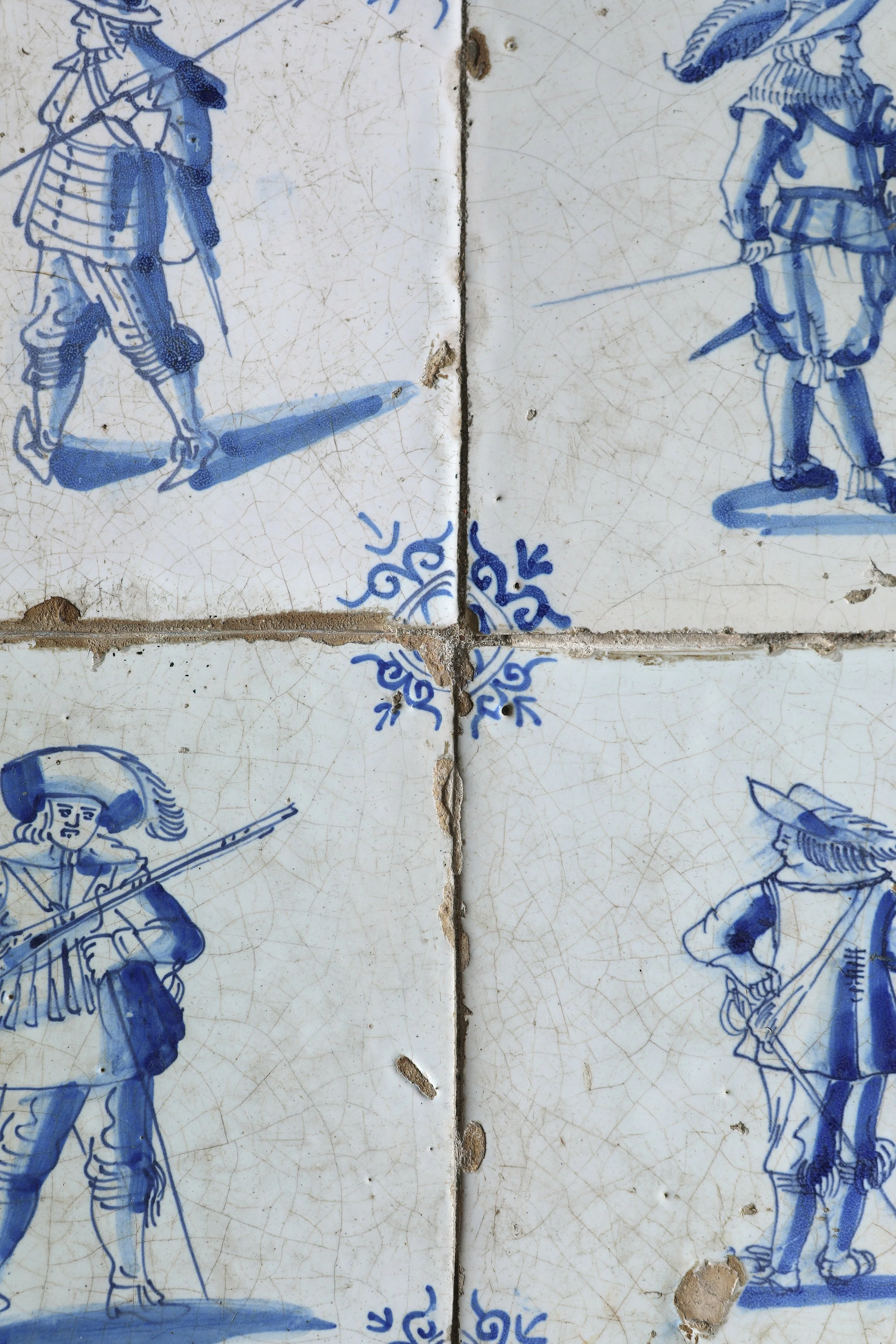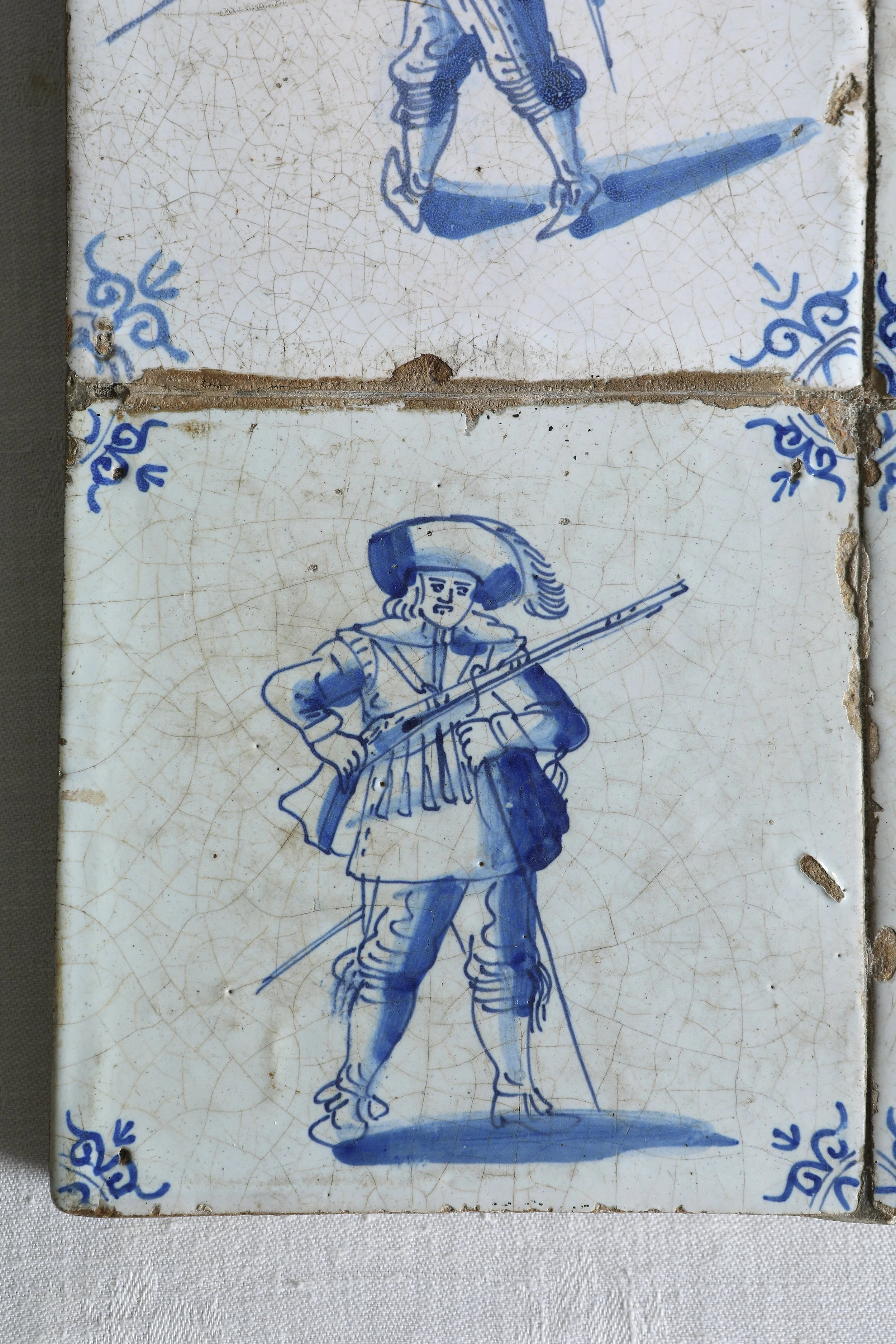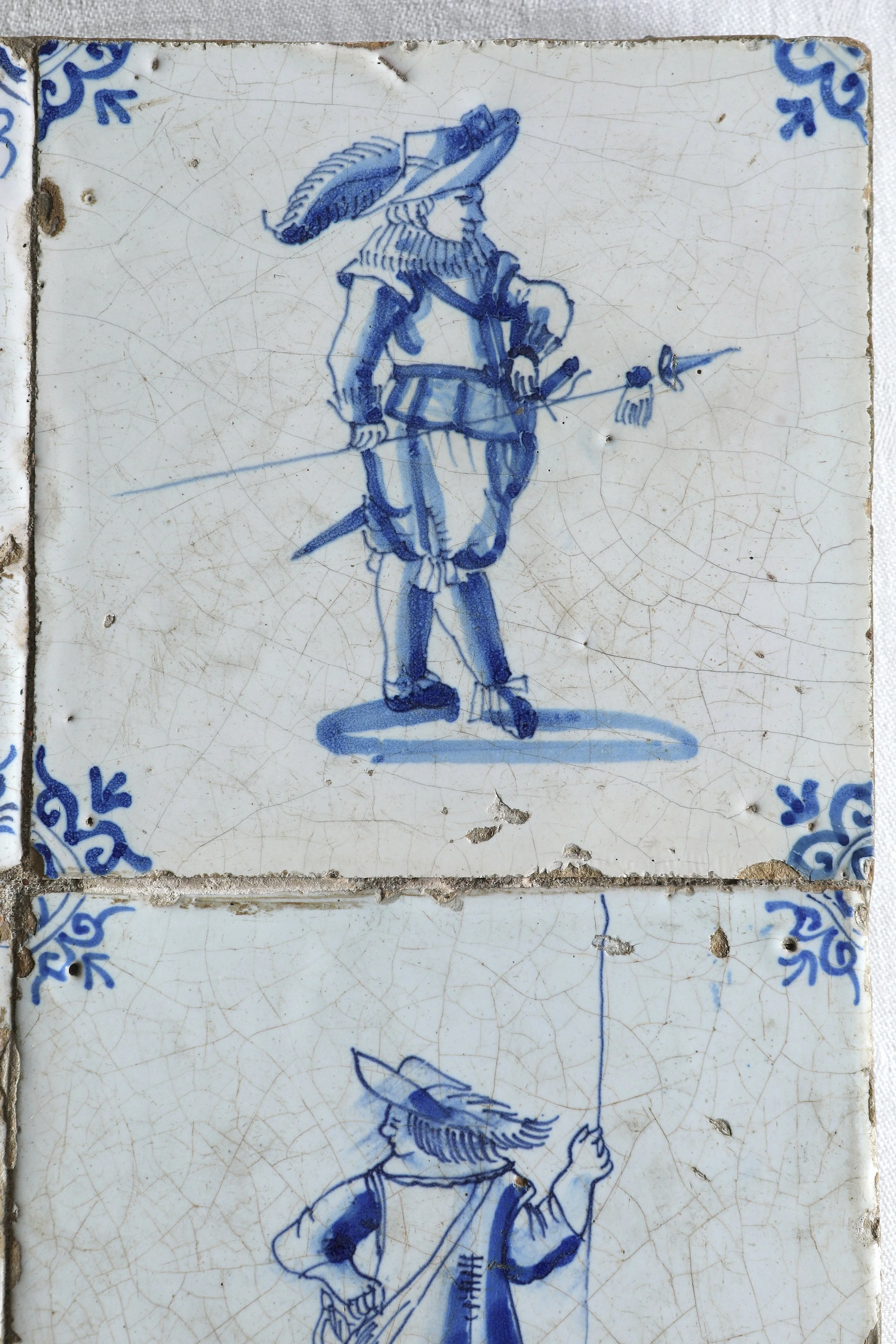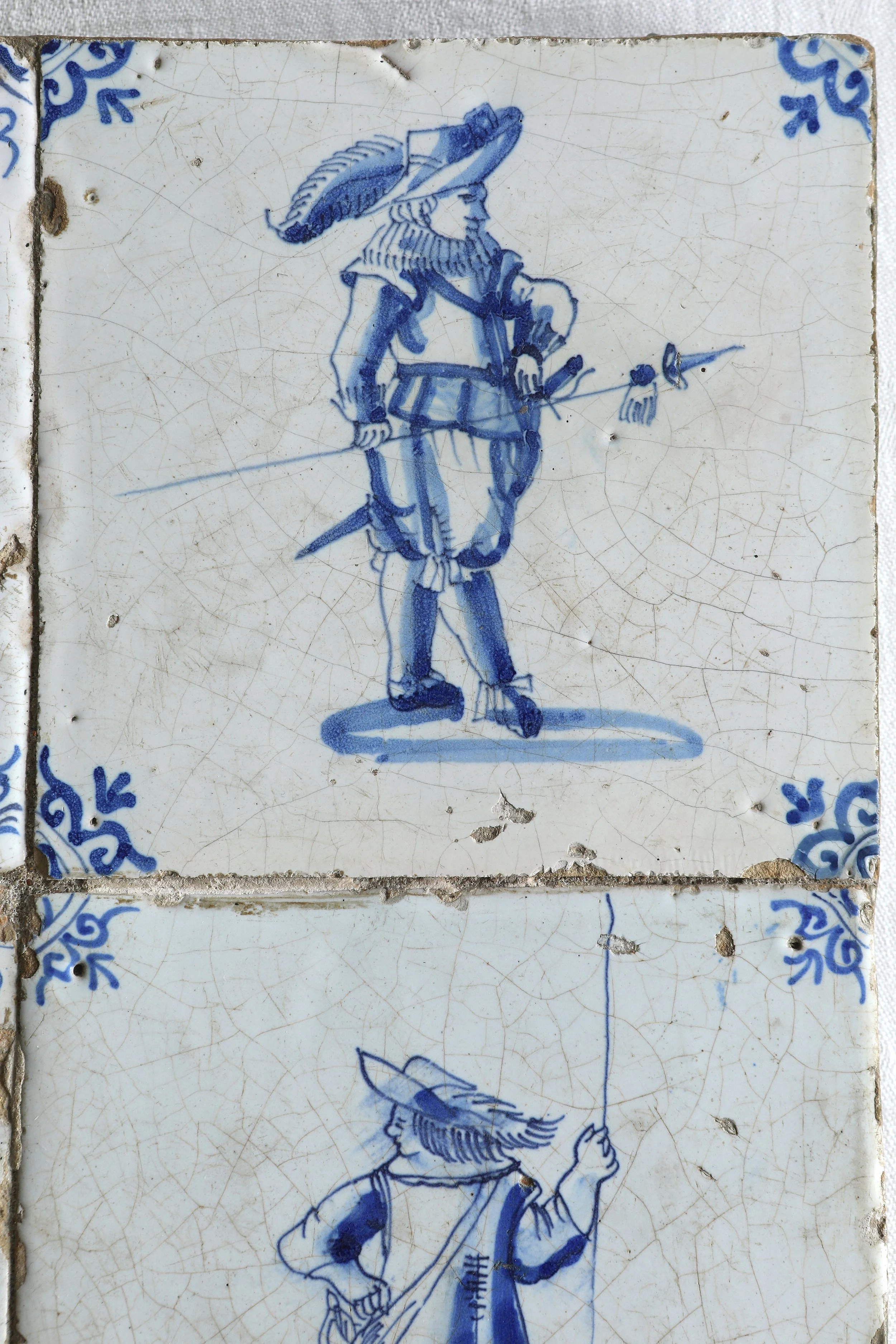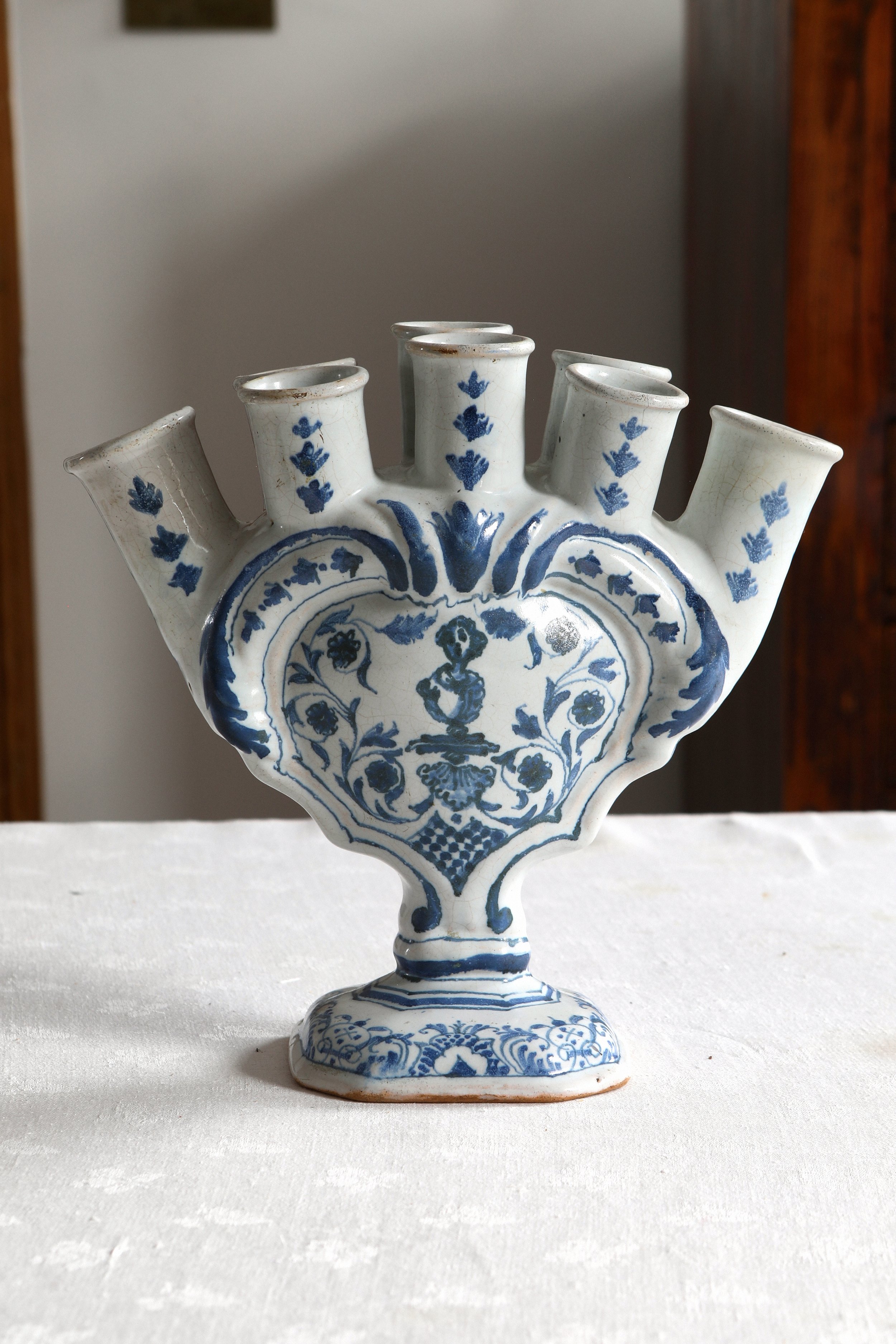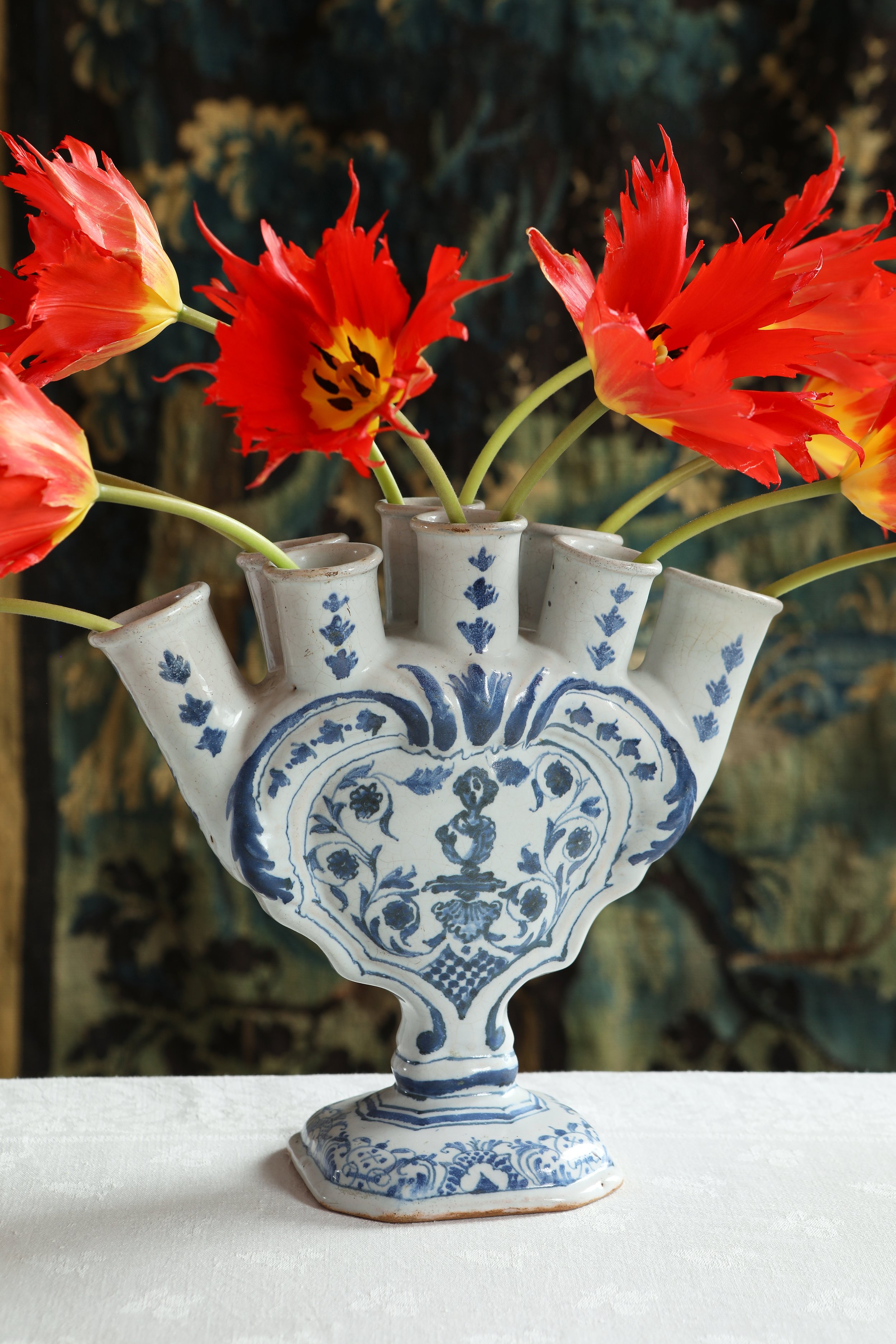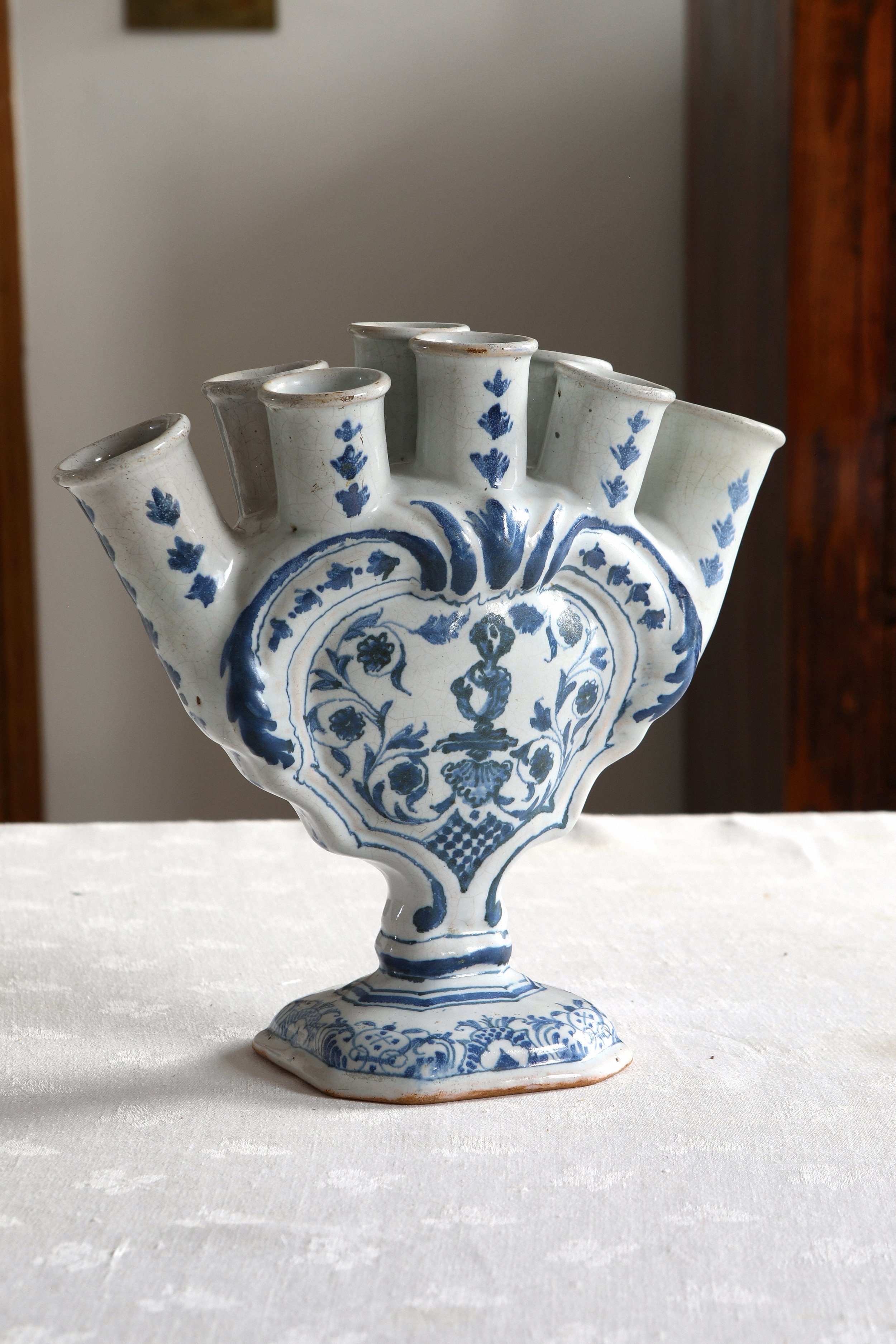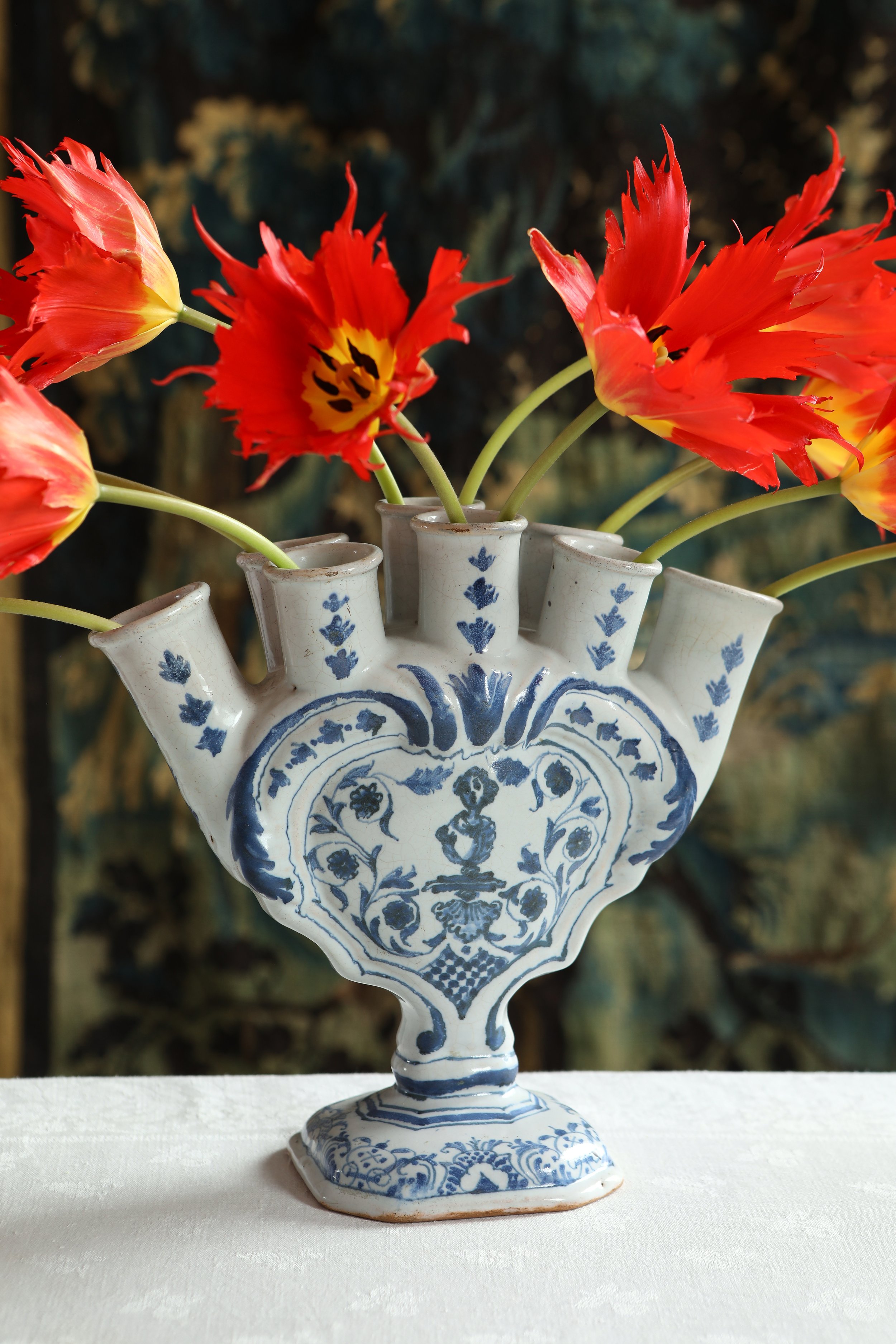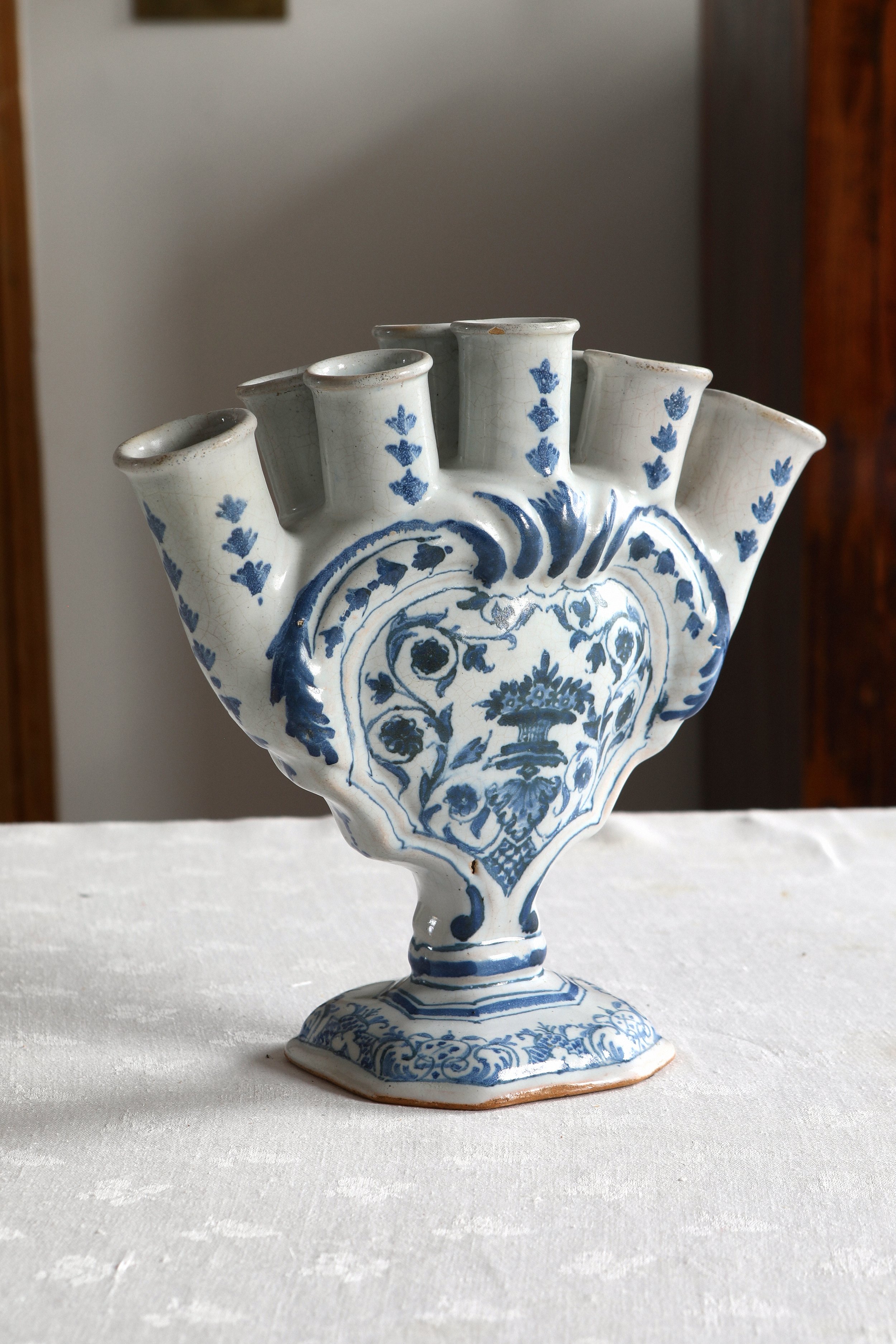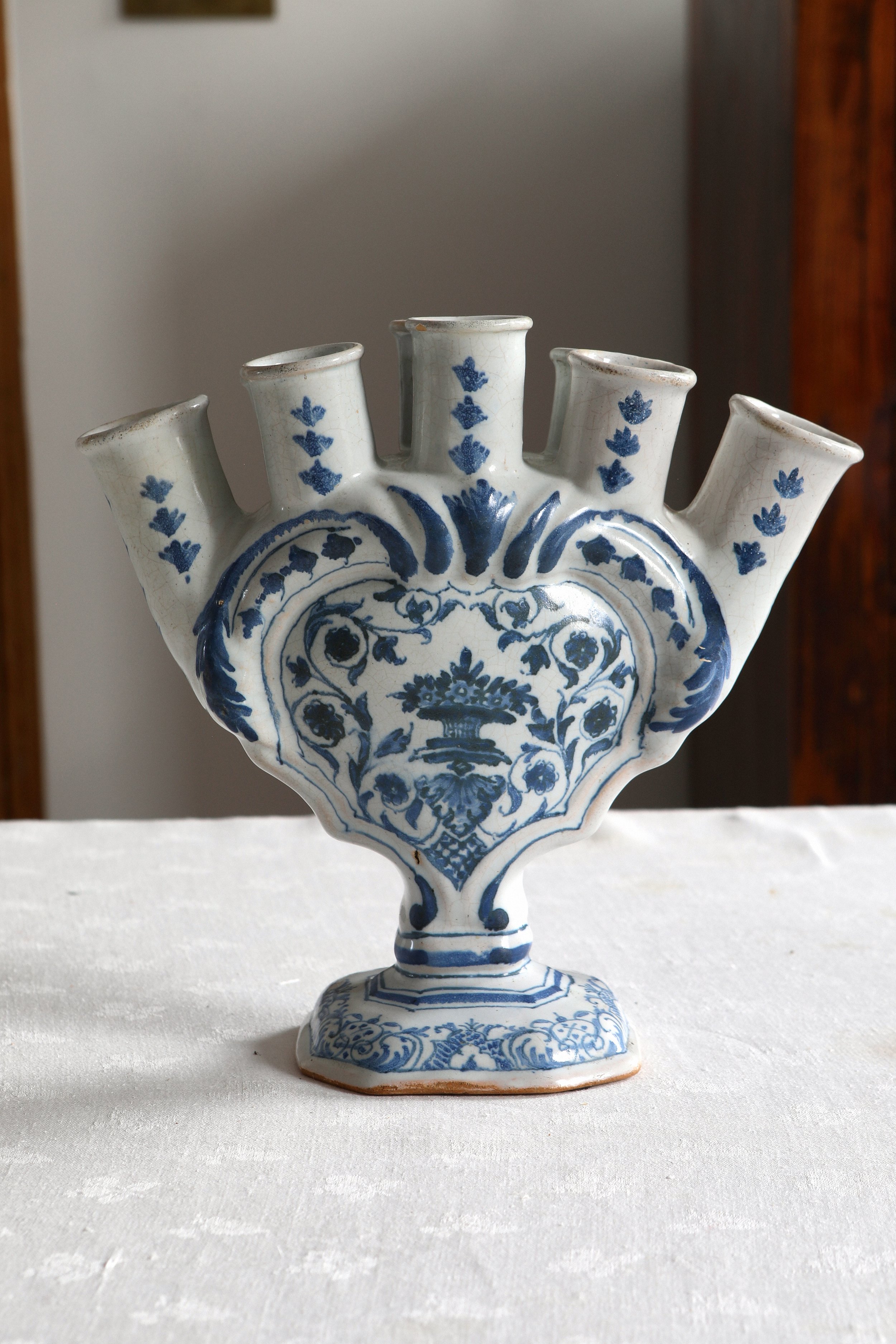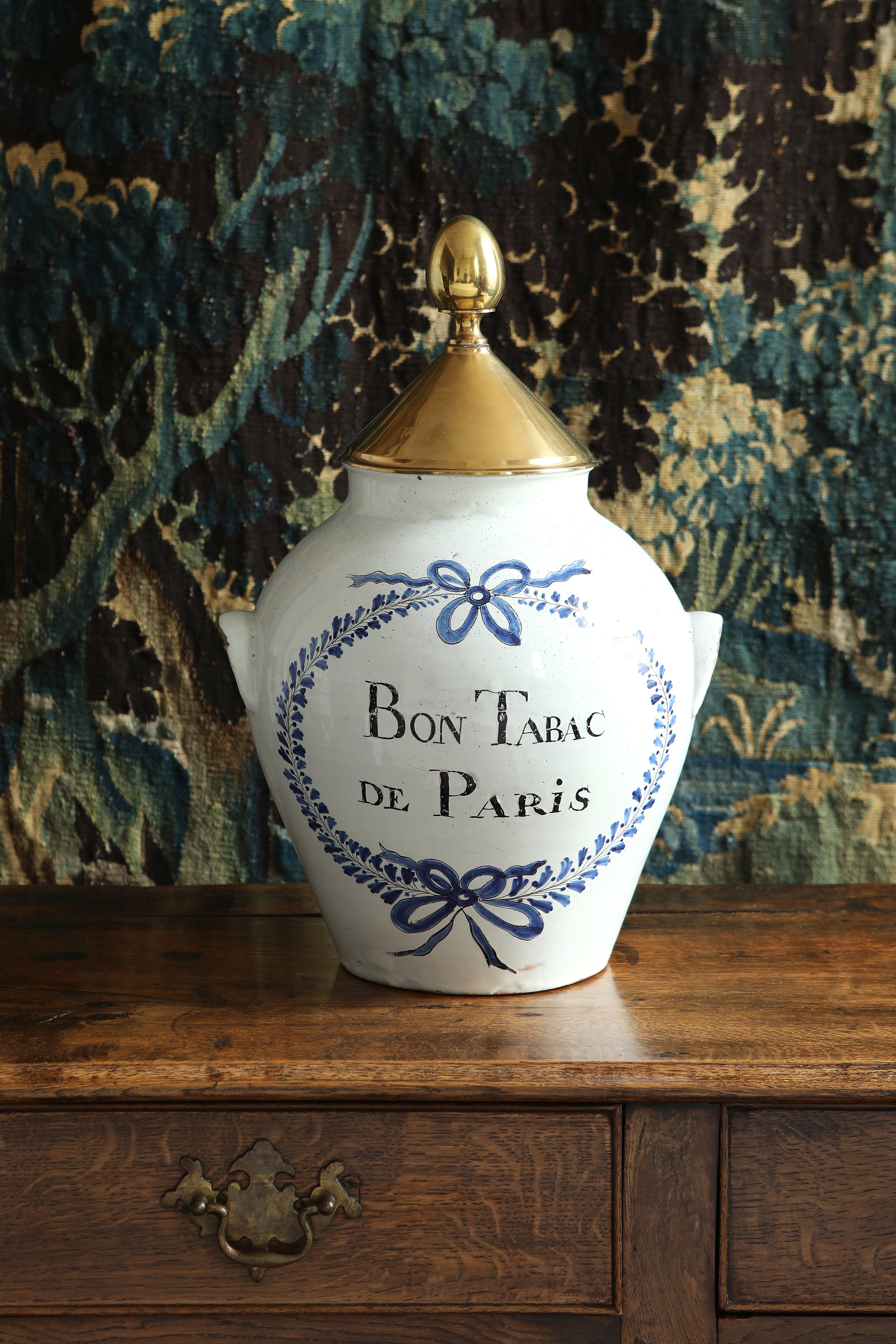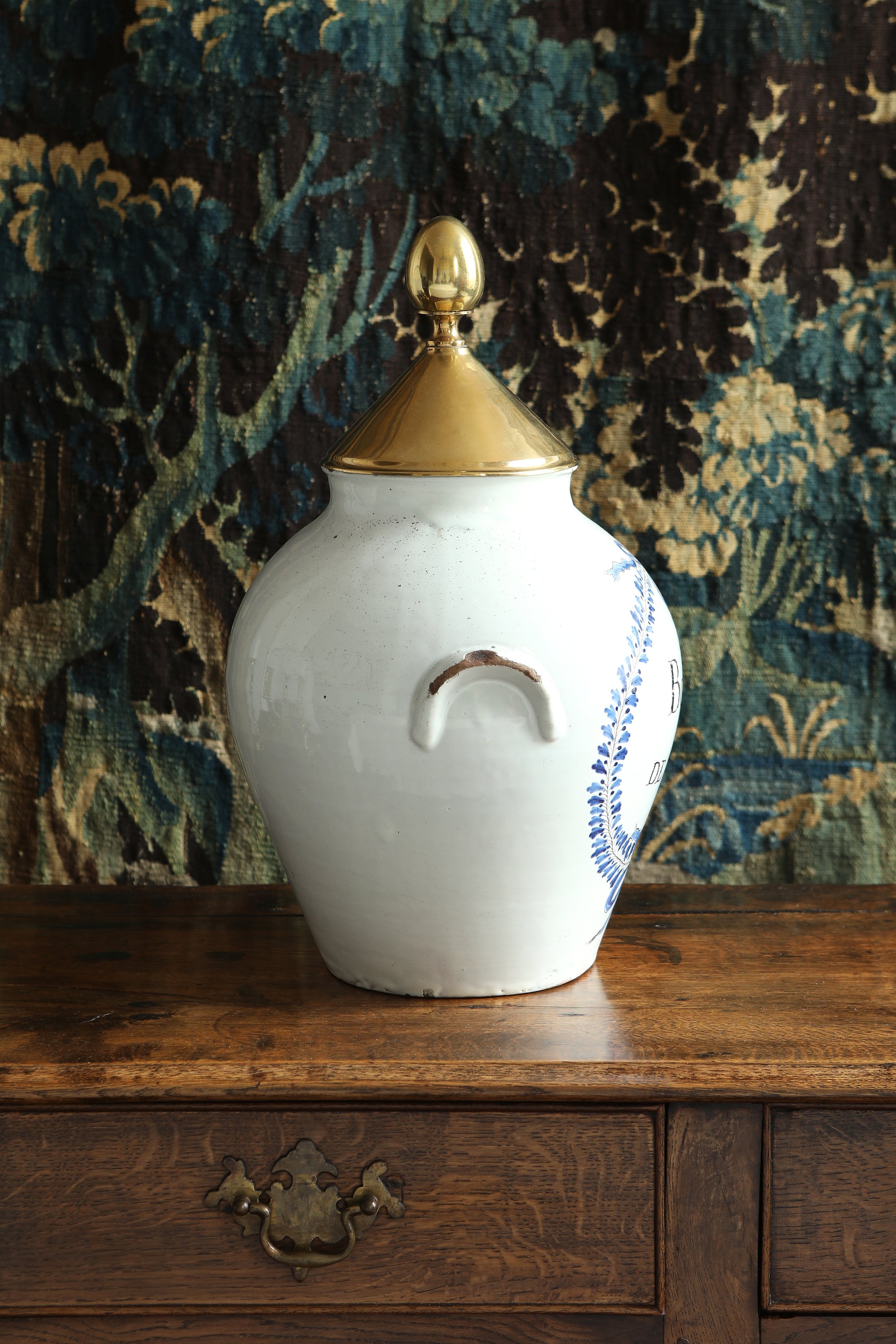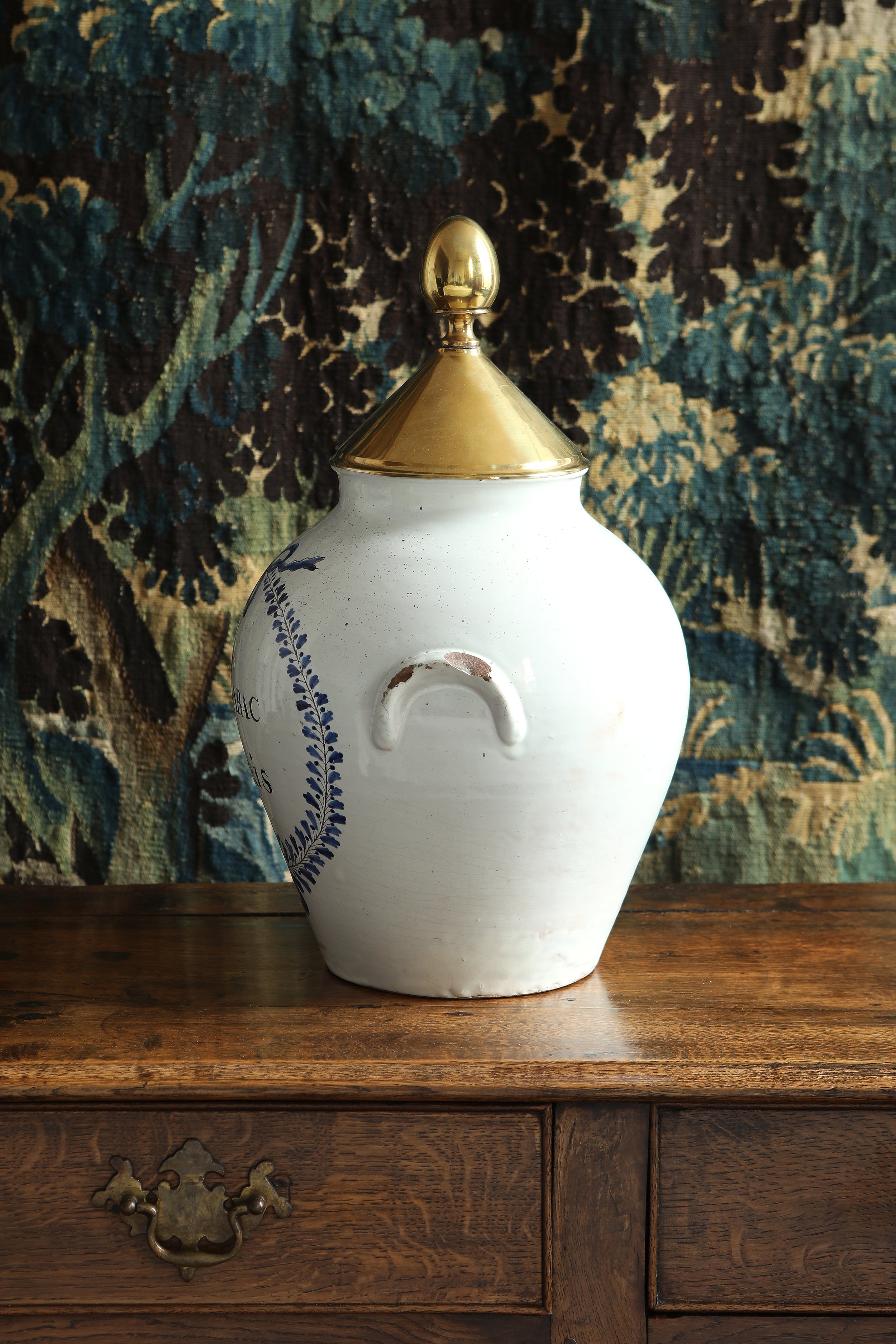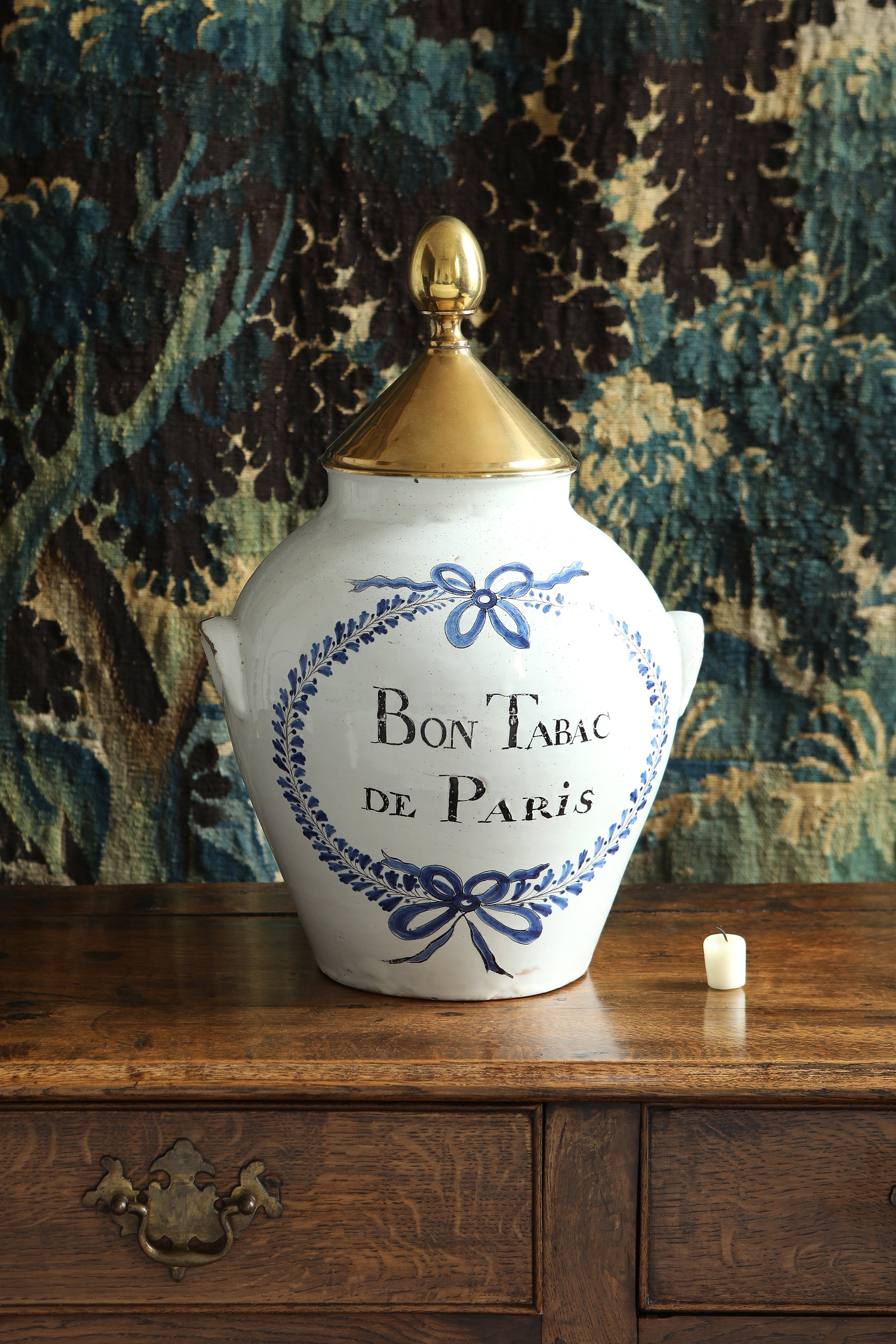 Image 1 of 17
Image 1 of 17

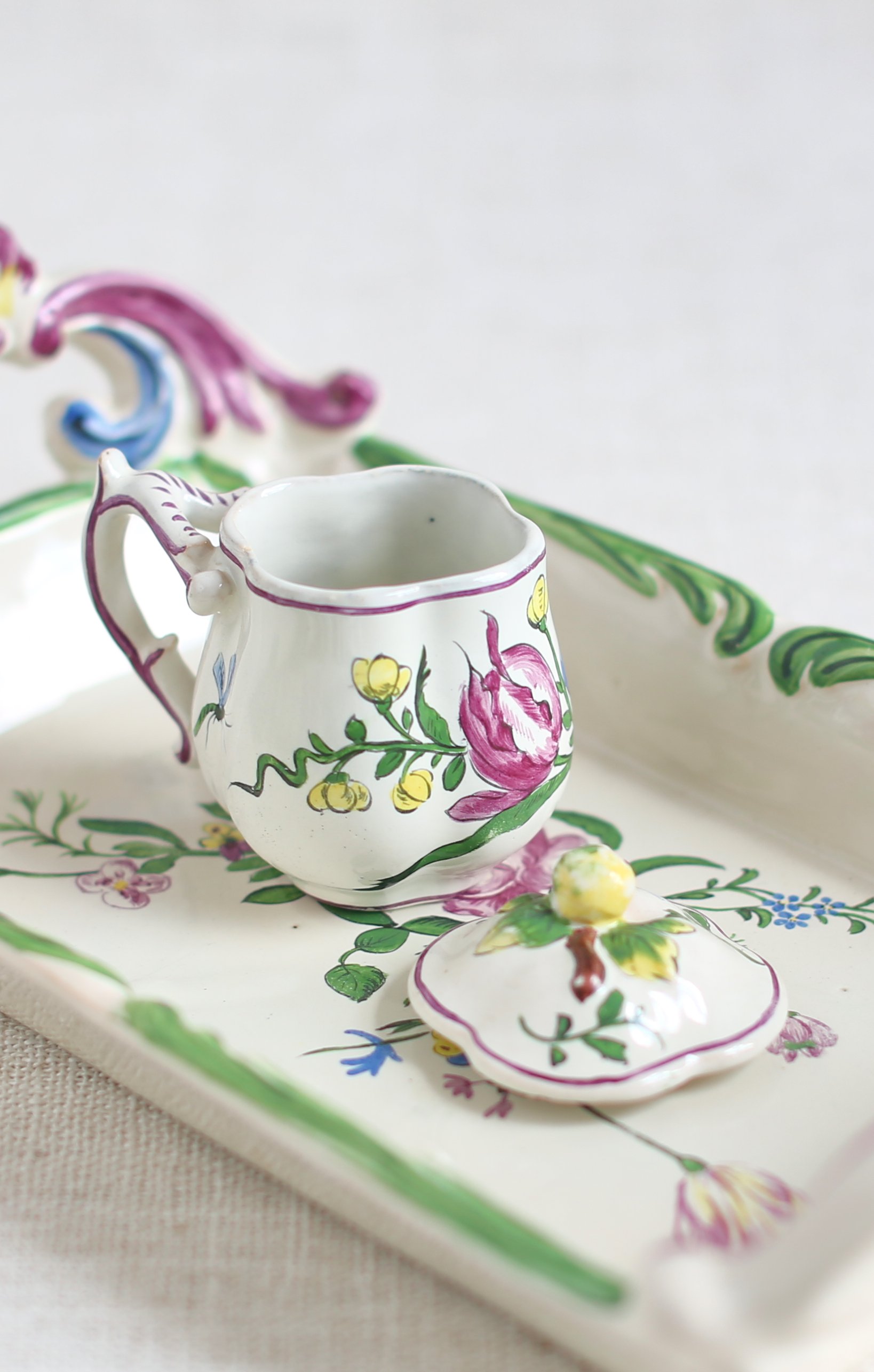 Image 2 of 17
Image 2 of 17

 Image 3 of 17
Image 3 of 17

 Image 4 of 17
Image 4 of 17

 Image 5 of 17
Image 5 of 17

 Image 6 of 17
Image 6 of 17

 Image 7 of 17
Image 7 of 17

 Image 8 of 17
Image 8 of 17

 Image 9 of 17
Image 9 of 17

 Image 10 of 17
Image 10 of 17

 Image 11 of 17
Image 11 of 17

 Image 12 of 17
Image 12 of 17

 Image 13 of 17
Image 13 of 17

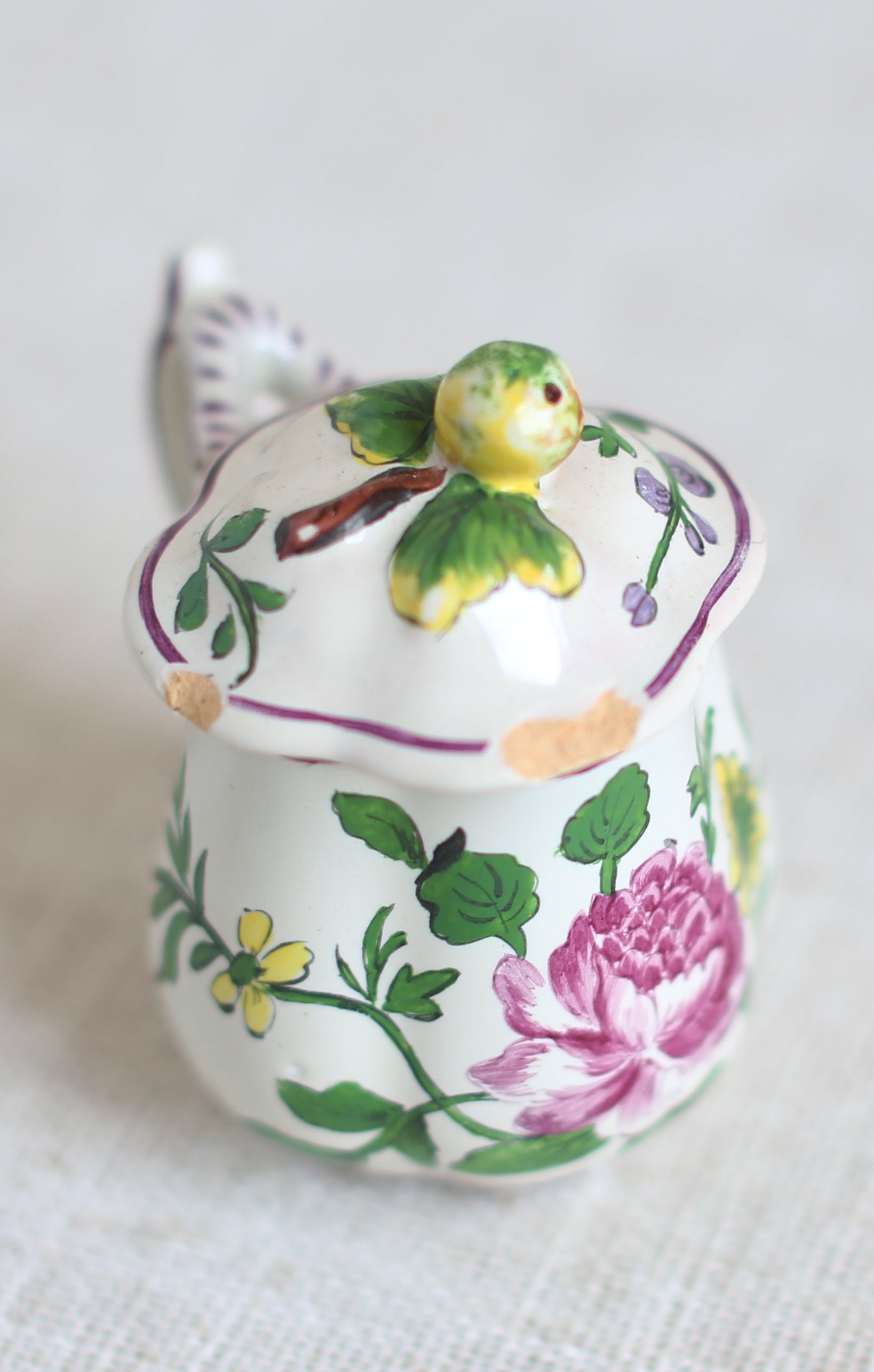 Image 14 of 17
Image 14 of 17

 Image 15 of 17
Image 15 of 17

 Image 16 of 17
Image 16 of 17

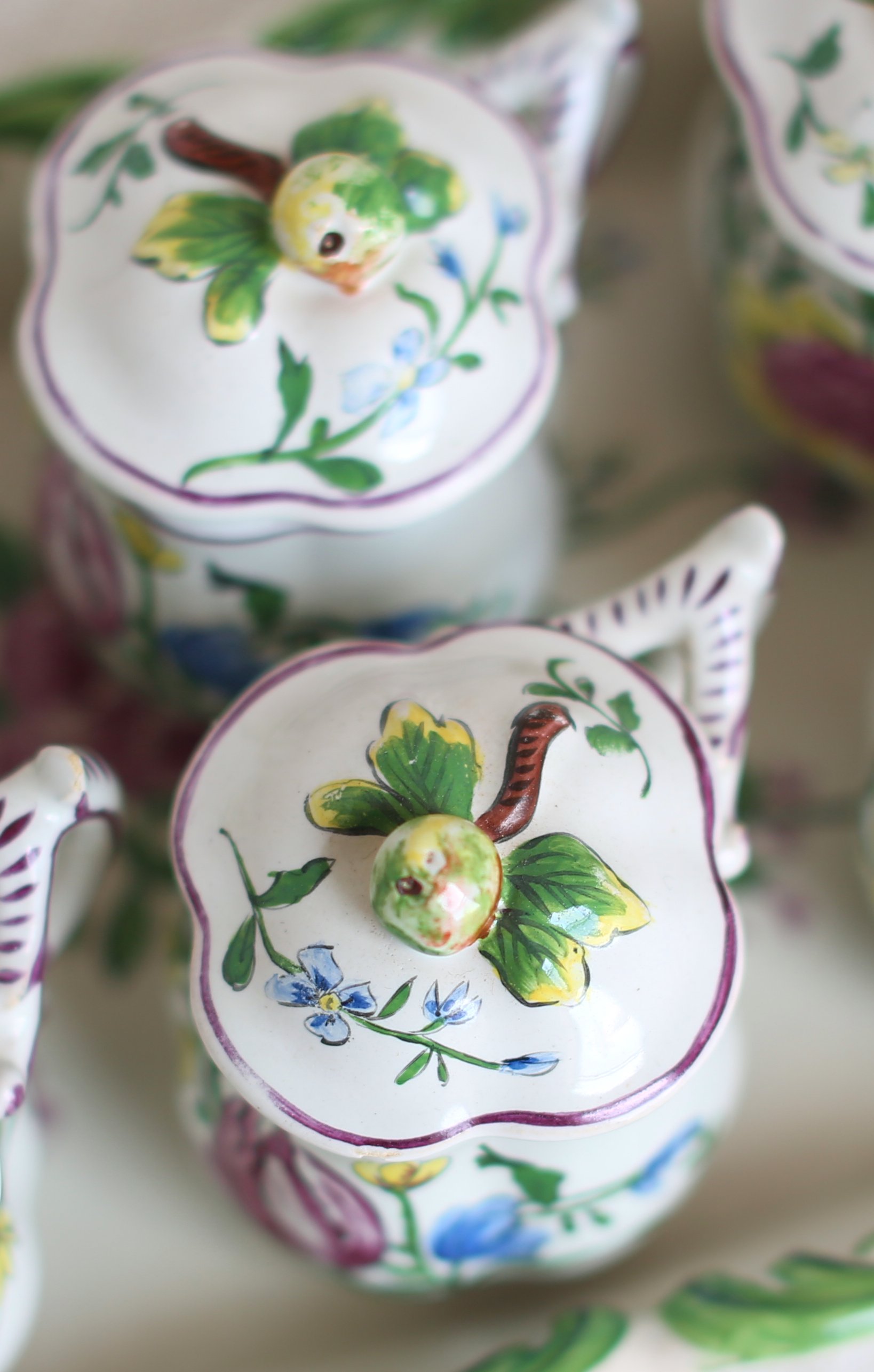 Image 17 of 17
Image 17 of 17


















18th Century Pots de Creme & Tray
Superb 18th century set of 6 pots de creme presented on a decorative tray & adorned with blooming flowers, lady bugs, & trompe l’oeil apples sitting atop each pot’s lid. Made by Veuve Perrin in France in approximately the 1780’s to serve decadent desserts. It was manufactured using the 'petit feu' technique, a low temperature firing technique that allowed for a wide array of colors to be painted over the glaze which were then fired at a lower temperature then the so-called ‘grand feu’ method which used high temperature colors like cobalt-blue & manganese for decoration.
Condition: Good, wear consistent with age. Two tops of the Pots de Creme have losses, see photos for details. Priced accordingly.
Dimensions:
Tray— 11 1/4” L x 6” W x 3 1/4” at its highest point
Pots de Creme— 3 1/4” H x 3” W
About Veuve Perrin
Born in Lyon, the daughter of a silk master settled in Marseille in 1720, Pierrette Candelot married Claude Perrin in 1736, a descendant of a family of potters from Nevers. In 1748 after her husband died, she inherited his small factory, which had fallen into financial decline. A talented entrepreneur she renamed the business Veuve Perrin, or the Widow Perrin, & the factory flourished under her leadership from the 1770s until her death in 1794. The French Revolution proved to be disastrous for all the pottery factories in Marseille and consequently Veuve Perrin closed its doors in 1803.
About French Faience
Faience, or tin-glazed and enameled earthenware, first emerged in France during the sixteenth century, reaching widespread usage among elite patrons during the seventeenth and early eighteenth centuries, prior to the establishment of soft-paste porcelain factories. Although characterized as more provincial in style than porcelain, French faience was used at the court of Louis XIV as part of elaborate meals and displays, with large-scale vessels incorporated into the Baroque garden designs of Versailles. Earlier examples of French faience attest to the strong influence of maiolica artists from Italy. Later works demonstrate the ways in which cities such as Nevers, Rouen, Lyon, Moustiers, and Marseille developed innovative vessel shapes and decorative motifs prized among collectors throughout Europe.
Superb 18th century set of 6 pots de creme presented on a decorative tray & adorned with blooming flowers, lady bugs, & trompe l’oeil apples sitting atop each pot’s lid. Made by Veuve Perrin in France in approximately the 1780’s to serve decadent desserts. It was manufactured using the 'petit feu' technique, a low temperature firing technique that allowed for a wide array of colors to be painted over the glaze which were then fired at a lower temperature then the so-called ‘grand feu’ method which used high temperature colors like cobalt-blue & manganese for decoration.
Condition: Good, wear consistent with age. Two tops of the Pots de Creme have losses, see photos for details. Priced accordingly.
Dimensions:
Tray— 11 1/4” L x 6” W x 3 1/4” at its highest point
Pots de Creme— 3 1/4” H x 3” W
About Veuve Perrin
Born in Lyon, the daughter of a silk master settled in Marseille in 1720, Pierrette Candelot married Claude Perrin in 1736, a descendant of a family of potters from Nevers. In 1748 after her husband died, she inherited his small factory, which had fallen into financial decline. A talented entrepreneur she renamed the business Veuve Perrin, or the Widow Perrin, & the factory flourished under her leadership from the 1770s until her death in 1794. The French Revolution proved to be disastrous for all the pottery factories in Marseille and consequently Veuve Perrin closed its doors in 1803.
About French Faience
Faience, or tin-glazed and enameled earthenware, first emerged in France during the sixteenth century, reaching widespread usage among elite patrons during the seventeenth and early eighteenth centuries, prior to the establishment of soft-paste porcelain factories. Although characterized as more provincial in style than porcelain, French faience was used at the court of Louis XIV as part of elaborate meals and displays, with large-scale vessels incorporated into the Baroque garden designs of Versailles. Earlier examples of French faience attest to the strong influence of maiolica artists from Italy. Later works demonstrate the ways in which cities such as Nevers, Rouen, Lyon, Moustiers, and Marseille developed innovative vessel shapes and decorative motifs prized among collectors throughout Europe.


